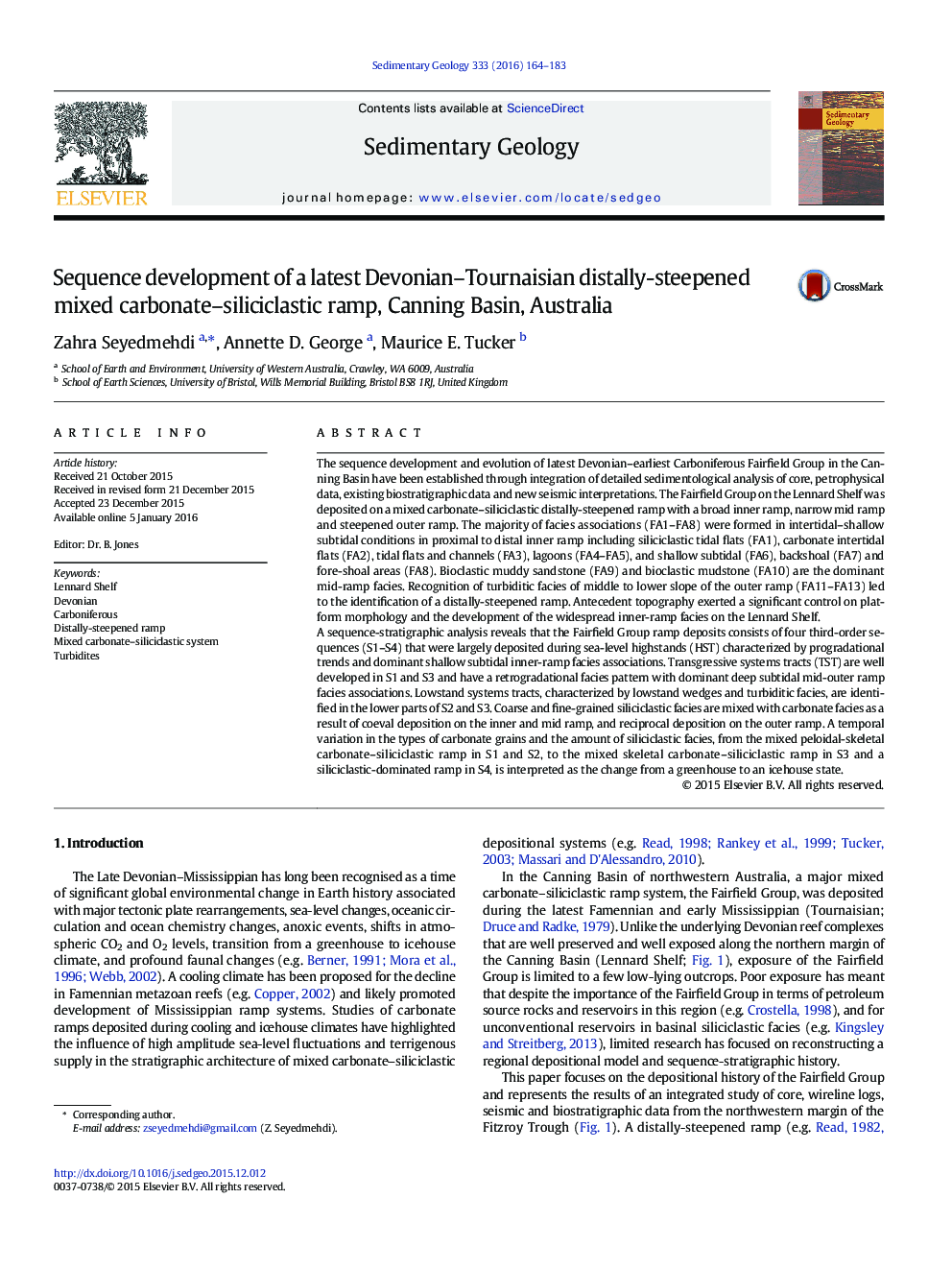| Article ID | Journal | Published Year | Pages | File Type |
|---|---|---|---|---|
| 4689127 | Sedimentary Geology | 2016 | 20 Pages |
Abstract
A sequence-stratigraphic analysis reveals that the Fairfield Group ramp deposits consists of four third-order sequences (S1-S4) that were largely deposited during sea-level highstands (HST) characterized by progradational trends and dominant shallow subtidal inner-ramp facies associations. Transgressive systems tracts (TST) are well developed in S1 and S3 and have a retrogradational facies pattern with dominant deep subtidal mid-outer ramp facies associations. Lowstand systems tracts, characterized by lowstand wedges and turbiditic facies, are identified in the lower parts of S2 and S3. Coarse and fine-grained siliciclastic facies are mixed with carbonate facies as a result of coeval deposition on the inner and mid ramp, and reciprocal deposition on the outer ramp. A temporal variation in the types of carbonate grains and the amount of siliciclastic facies, from the mixed peloidal-skeletal carbonate-siliciclastic ramp in S1 and S2, to the mixed skeletal carbonate-siliciclastic ramp in S3 and a siliciclastic-dominated ramp in S4, is interpreted as the change from a greenhouse to an icehouse state.
Keywords
Related Topics
Physical Sciences and Engineering
Earth and Planetary Sciences
Earth-Surface Processes
Authors
Zahra Seyedmehdi, Annette D. George, Maurice E. Tucker,
